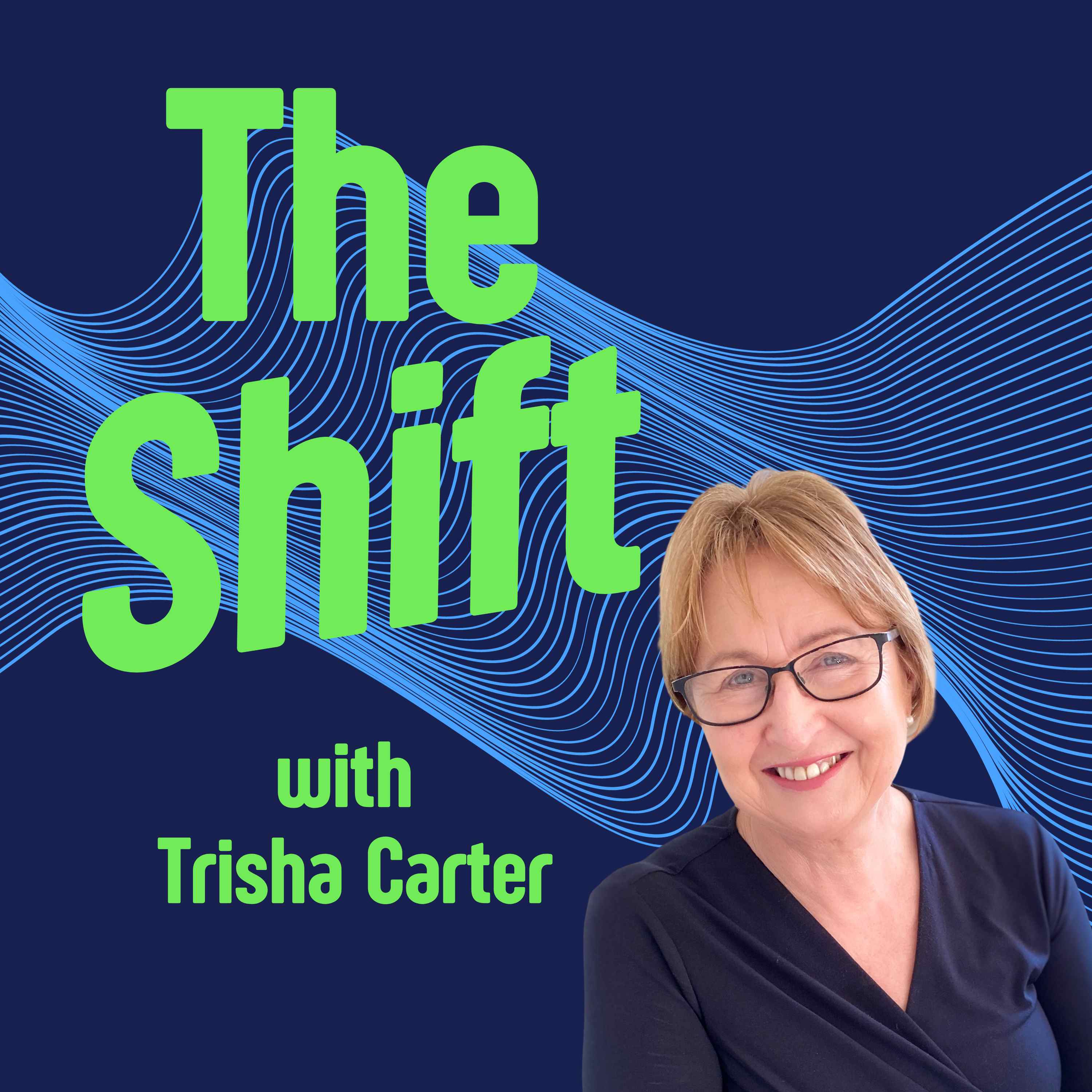Episode 53
Responding to Moments of Shift with PAUSE
This week, Trisha continues her exploration of cultural intelligence by introducing the P.A.U.S.E. Process, a practical framework for responding effectively to cultural shift moments. Building on last week's S.H.I.F.T. Signals, Trisha breaks down each step of the P.A.U.S.E. Process.
Drawing on insights from previous guests, including neuroscientist Mark Williams, psychologist Monique Toohey, and global leadership expert Dawn Bryan, Trisha offers concrete techniques for transforming challenging cultural encounters into opportunities for growth and connection.
A downloadable guide to the P.A.U.S.E. Process will be available on Trisha's Substack. Connect with Trisha on LinkedIn to share your experiences applying these frameworks in your cultural interactions.
Transcript
[00:00:14]
[:[00:01:00] Shifts in thinking as those of you who have listened to some of the earlier episodes will be aware. Cultural intelligence CQ the capability to be effective in situations of diversity is made up of four areas. There's the motivational, the knowledge, the metacognitive, and the behavioral. There's strong evidence that tells us that CQ helps us to operate effectively in multicultural situations and also in other situations of diversity.
[:[00:02:01] Today we're going to explore what to do when you notice these signals or when you're in a moment. Quite often, it can be a moment of discomfort in terms of learning from a cultural perspective, and I call this process the pause process. The pause process provides a practical approach to responding effectively to cultural shift moments.
[:[00:02:46] It might be a clash that you can see happening in your team and you realize you need to step in. It might be a potential crisis moment. You get the picture. It's a moment we need to pause and shift, so we will lean into our pause process. It's grounded in both research and practical wisdom from cultural intelligence, expert neuroscientists and cross-cultural practitioners, including many of our previous guests on this podcast. So let's explore what each letter in the Pause framework stands for and how you can apply it in your daily interactions.
[:[00:03:51] You might feel hot, hot on your face or your head. You might feel tense in your throat or your jaw or chest. You might feel your heart racing. So the first step is to regulate your physiological response. We need to understand how our bodies respond to difficult situations and sometimes to cultural differences.
[:[00:04:21] Monique: When we feel difference that can be, uh, felt by the body in different ways. So for some of us, yes, it can be felt as this is awesome. Mm-hmm. Like, I'm, I'm awake, I'm so curious about this difference. And for other people it can feel un uncomfortable. But that is the best feeling because if one takes that moment to reflect on why they're feeling uncomfortable. You, it's your body articulating a cultural difference here that you don't understand and don't have a name for.
[:[00:05:10] and exhale for six.
[:[00:05:42] And then let it out.
[:[00:05:50] Mark: So, you know, when you walk into a room, walk into the room and stop and breathe mm-hmm. And look around. Work out how you're feeling, um Yeah. Before you actually start interacting with people. 'cause if you just walk in, in a bluster, um, and it happens to be that there's everybody in there is from a different race mm-hmm.
[:[00:06:23] Trisha: So slowing down that heart rate fight or flight response that interrupts the stress response that you might be heading into. And what it does is it gives you a higher order thinking, a chance to engage, and in these moments, we really need that type of thinking rather than the automatic operating out of our standard processes type thinking.
[:[00:06:57] After centering physically, you need to internally recognize what's happening. You could name the sensation you're experiencing. I'm feeling tense. I'm feeling hot. I'm feeling confused. Label the emotion. I'm feeling surprised. I'm feeling defensive. I'm feeling angry. Even if it's a positive emotion, I'm feeling curiosity and intensity.
[:[00:07:36] Dawn Bryan, the Global leadership consultant in episode 17, shared her powerful experience of acknowledging a shift in her perspective.
[:[00:08:23] And I think I was gutted, But I, I likely needed to be,
[:[00:09:00] Greg: What is it at that point of time of an accident made somebody think that, what they were doing was safe and what, and was the right thing? Mm m Uh, and, and you can only, you can't know that by guessing. You can only know that by, um, making them feel comfortable that they can tell their truth.
[:[00:09:20] Trisha: So we want to be able to hear that truth
[:[00:09:45] David: I've used, uh, in both the episodes, uh, we've done together, I've used the word reflection several times and I do think that's something that's fairly concrete that people can relate to of how do I reflect on this?
[:[00:10:41] David: sort of that infamous Toyota principle that they used of five why's, you know, asking, you know, why is it that this individual was upset that I startled them? Okay, well why did that trigger kind of fear or why? Did they think that even though I am playful, that I, you still wasn't a safe person to let them know, please not do that, et cetera.
[:[00:11:17] S stands for shift perspectives intentionally. Now that we have more understanding, we can actively try to see the situation through different viewpoints. Dawn Bryan from episode 17 described this beautifully when she explained her leadership framework.
[:[00:11:37] And as we think about leadership in an organization, maybe it comes down to the three big buckets that we talk about at the Kaleidoscope Group, and those are empathy. Vision and depth. And for the empathy part, thinking about the people in our teams of what is it like to be them? What are their experiences, what are their opportunities? What are their barriers? How are they feeling?
[:[00:12:09] Monique: who do you the therapist need to be so your client brings their whole self into the room? Who do you need to be? And I think the answer is. Confident. Mm-hmm. Think confident to ask things around culture and religion and belief systems and non-dominant norms or family structures
[:[00:13:04] So when we have more of the understanding, when we've got this sense of perspectives, then it's time to engage. That's the E in pause, and we engage authentically because now we are not just responding out of automatic responses.
[:[00:13:36] Dawn: Sometimes that looks like going counter to your own culture. Yeah, exactly. And, and I can think of, you know, times where. You know, my, I'll just use my husband, um, who is incredibly humble and, uh, and maybe was, uh, demonstrating that in ways that weren't meaningful in the culture in which we were. And, and so, so what he meant as humility, uh, may not have been, you know, taken in that way.
[:[00:14:03] Trisha: So engaging authentically means choosing whether to adapt, to explain, to inquire, or just to observe. It means using body language that communicates receptivity and openness and acknowledging differences while seeking common ground. You could share your viewpoint as one possibility, not a universal truth, and as always, remain flexible and adjusting based on the feedback you're getting as Monique reminded us.
[:[00:14:45] Trisha: This pause process can be applied in many different contexts, professional settings, personal interactions, community events, travel experiences, and education settings. But like any skill, it takes some practice. Mark Williams reminds us.
[:[00:15:11] Trisha: By implementing the pause process. When you notice the shift signals, you can transform potentially challenging cultural encounters into opportunities for growth, connection, and deeper understanding. So again, the quick reference for the pause process, P-A-U-S-E is P physically center yourself with deep breathing and relaxing the tension you're feeling A acknowledging what's happening By naming sensations and emotions. U understand before responding by asking questions and listening fully. S shift perspectives intentionally through perspective taking e.
[:[00:16:13] Remember. The pause process isn't about suppressing your cultural perspective. It's about engaging more intentionally and effectively across cultural differences. I hope you find this framework helpful as you navigate your own cultural shift moments. I've created a downloadable guide to the process that will be available on our substack, and this guide includes the framework we've discussed today, to help you practice responding to cultural shift moments.
[:[00:17:03] Thank you so much for being part of the shift today. These conversations become even more valuable when you share them with others. If today's discussion offered you practical insights, pass it along to someone in your network who's on their own cultural journey, and you can find us on your favorite podcast platform.
[:[00:17:33]

